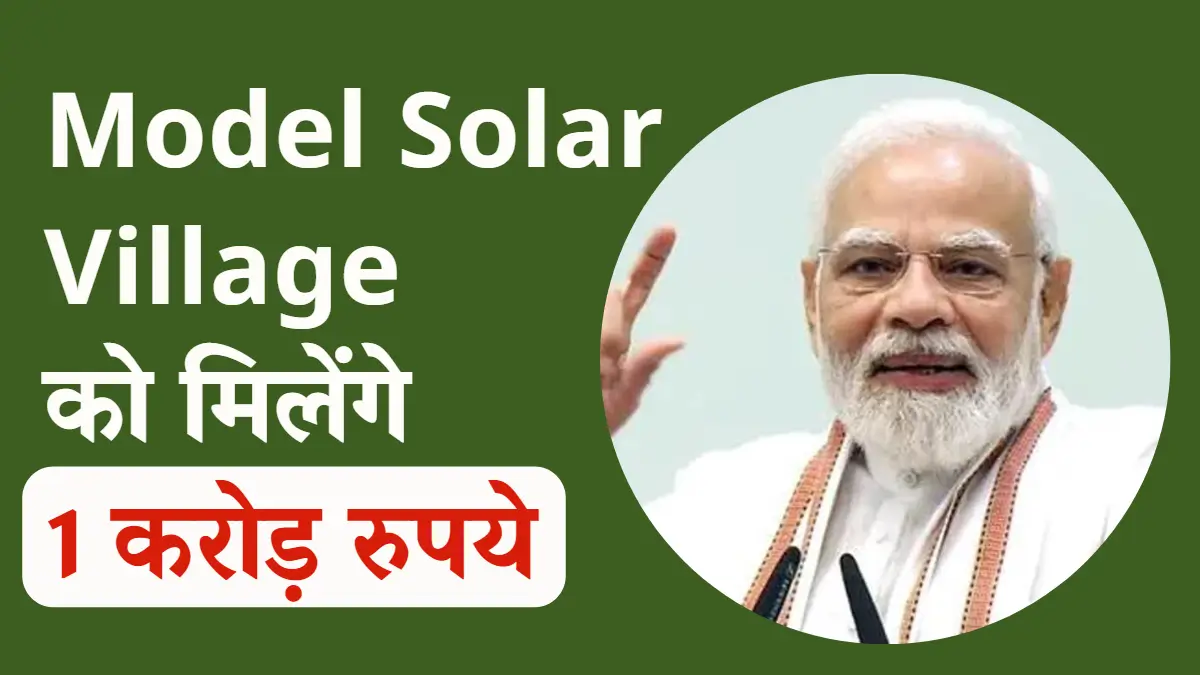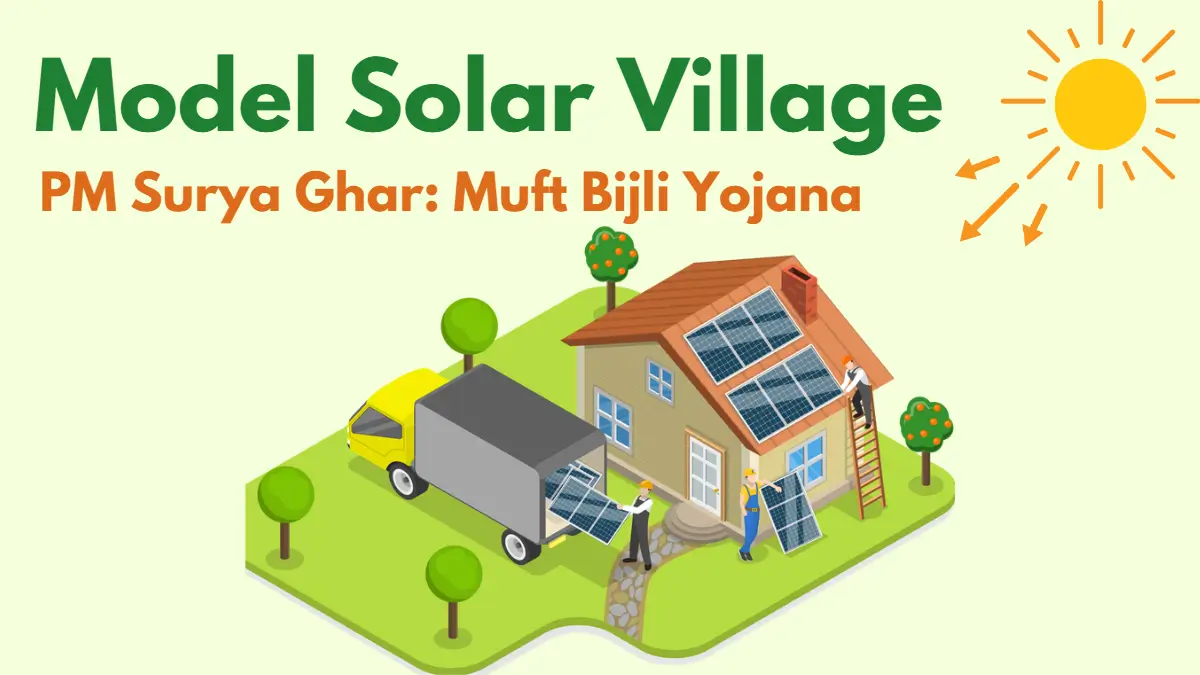Clean and green energy is becoming very important for India’s future. One big step in this direction is the creation of Model Solar Villages under the PM Surya Ghar: Muft Bijli Yojana.
This scheme helps rural areas use solar energy to make villages self-sufficient in electricity. Let’s know more about Model Solar Villages in a simple way.
Overview of a Model Solar Village
A Model Solar Village is a village that meets all its electricity needs using solar power. The government plans to develop one Model Solar Village in each district of India. These villages will use solar energy for homes, streetlights, water supply, and farming activities.
PM Surya Ghar Yojana has a budget of Rs 75,021 crore and will continue till the financial year 2026-27.

Main Goals of the Model Solar Village
The main goals of Model Solar Villages are:
- Encourage Solar Energy Use: Motivate more people in villages to use solar energy.
- Provide Clean Energy: Supply green energy to all villagers.
- Make Villages Self-Sufficient: Help villages produce their own electricity, reducing dependence on outside sources.
- 24×7 Solar Power: Make sure villages get continuous solar electricity for homes, public areas, and farms.
- Promote Solar Technology: Use solar lights, water systems, pumps, and street lighting in the village.
Budget and Funding Details
The government has allocated ₹800 crore for the Model Solar Village project. Each selected village will get ₹1 crore from the central government to help set up solar systems and related technologies.
Who Can Become a Model Solar Village? – Eligibility
Not all villages can apply. To be eligible, a village must:
- Have Enough Population: Usually, a village should have more than 5,000 people as per the latest census. But in states like Uttarakhand, Himachal Pradesh, and the North-East, villages with more than 2,000 people can also apply.
- Be a Revenue Village: It must be officially recognized as a revenue village.
How Are Villages Selected?
The selection process works like this:
- District Competition: Villages in each district compete to be the Model Solar Village.
- Evaluation: The village with the largest solar energy installed wins.
- District Level Committee (DLC): This group oversees the selection and implementation process.
Guidelines for Model Solar Village
The government shared detailed rules for this program on 9th August 2024. You can download the full PDF guidelines below:
How Is the Scheme Implemented?
Once a village is selected, its State Renewable Energy Development Agency or another agency will prepare a Detailed Project Report (DPR). The DPR explains how the village will shift to solar energy. It includes:
- Community Solar Plant: Building a solar plant with or without battery storage.
- Solar Tools for Work: Providing solar-powered tools for local businesses.
- Rooftop Solar Panels: Installing solar panels on government buildings.
- Solar Street Lights: Setting up solar lamps for streets.
- Solar Pumps for Farming: Using solar energy to power water pumps for agriculture.
- Other Solar Tools: Using other solar technologies as needed.
Main Benefits of Model Solar Villages
- Save Money: Using solar energy lowers electricity bills.
- Power Always On: Solar power keeps the lights and machines running without interruptions.
- Protect the Environment: Solar energy reduces pollution because it’s clean and renewable.
- Be Independent: Villages rely on their own power, not outside electricity suppliers.
How Funds Are Released
The money is paid in three steps:
- First Payment (40%): Given when all the work in the DPR is assigned.
- Second Payment (40%): Paid after the work is finished and checked by the District Level Committee.
- Final Payment (20%): Released after six months if the solar systems work well.
Monitoring and Support
The District Level Committee regularly checks the project to make sure the village becomes fully solar-powered within a year. They also watch the proper use of funds.
The Model Solar Village project under PM Surya Ghar: Muft Bijli Yojana is a big step toward a cleaner future. It helps villages save money, cut pollution, and become energy independent. This plays an important role in improving life with clean and regular electricity.
Knowing this plan shows how the government is actively working to build a greener and brighter India for everyone.
